Sir Arthur Cotton | |
|---|---|
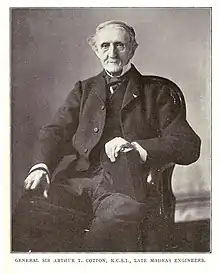 Sir Arthur Cotton | |
| Born | 15 May 1803 Combermere, Cheshire, England |
| Died | 24 July 1899 (aged 96) Dorking, Surrey, England |
| Allegiance | |
| Service/ | Madras Army British Army |
| Rank | General |
| Battles/wars | First Anglo-Burmese War |
General Sir Arthur Thomas Cotton KCSI (15 May 1803 – 24 July 1899) was a British general and irrigation engineer.
Cotton devoted his life to the construction of irrigation and navigation canals throughout British India. He helped many people by building the Dowleswaram Barrage (Rajahmundry), the Prakasam Barrage, and the Kurnool Cuddappah Canal (K. C. Canal). His dream was only partially realised, but he is still honoured in Andhra Pradesh and parts of Tamil Nadu for his efforts.[1] The Sir Arthur Cotton Museum has been built in his honour in Rajamahendravaram, Andhra Pradesh. The museum holds approximately one hundred images and 15 machine tools that Cotton used when constructing the barrage in Andhra Pradesh from 1847 to 1852.
He entered the Madras Engineers in 1819 and fought in the First Burmese War. He was knighted in 1861.
He was the father of the evangelist Elizabeth Hope.
Biography
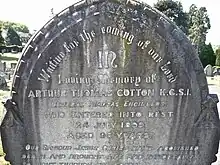
Arthur Cotton was born on 15 May 1803 at Combermere, the tenth son of Henry Calvely Cotton, uncle of the noted Field Marshal Lord Combermere,[2] and one of eleven brothers. In 1818, aged 15, he became a cadet at the East India Company's military seminary at Addiscombe, Surrey. He passed out in December 1819 and was commissioned Second Lieutenant in the Madras Engineer Group.
He started his career with the Ordnance Survey at Bangor, North Wales, in January 1820, where he was praised for his reports. In 1821 he was appointed for service in India, where he was initially attached to the Chief Engineer to Madras. He was later appointed as an Assistant Engineer to Superintending Engineer of the Tank Department.
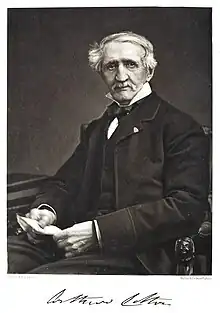
Cotton conducted a marine survey of the Pamban passage between India and Ceylon. He was promoted to the rank of captain in 1828, and was put in charge of investigation for the Cauveri Scheme. He started working to remove the soil settling in Kallanai Dam and with the model of the dam he built the Upper Dam in Kaveri in Mukkombu, near Tiruchirapalli. He constructed the Lower Anaicut Dam in Anaikarai. The success of these projects paved the way for further important projects on the Godavari and Krishna Rivers.
Cotton recalled how, from analysing the Kallanai Dam and its foundations, his group learned how to construct foundations in a sandbed. In 1844, Cotton recommended the construction of an "anicut" (a dam made in a stream for maintaining and regulating irrigation)[3] and prepared plans for Visakhapatnam port. In 1847, the work on the Godavari anicut was started.
In 1848 he proceeded to Australia due to ill health and handed over the charge to Captain Orr. In 1850 he returned to India and was promoted to the rank of colonel. He succeeded in completing the magnificent project on the Godavari river at Rajahmundry in 1852. After completing the Godavari anicut Cotton shifted his attention to the construction of the aqueduct on Krishna River. The project was sanctioned in 1851 and completed by 1855. After completing the Krishna and Godavari anicuts, Cotton envisaged the storage of the Krishna and Godavari river waters.
In 1858, Cotton came up with even more ambitious proposals such as connecting all major rivers of India, and interlinking of canals and rivers. He suggested drought-relief measures for Odisha. Arthur Cotton retired from service in 1860 and left India. He was knighted in 1861. He visited India in 1862 and 1863 and offered advice on some river valley projects.
His work in India was much appreciated and he was honoured with KCSI (Knight Commander of the Order of the Star of India) in 1877. He became a much-revered figure in the state of Andhra Pradesh for his contribution in irrigating the area of land also known as Konaseema.
Cotton died on 24 July 1899.
Assessment
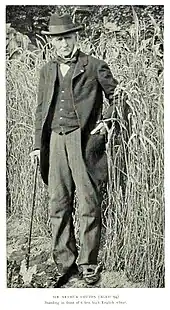
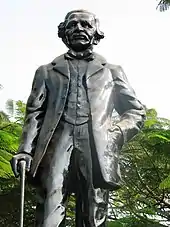
Cotton was hated by his administrative superiors—thanks to his empathy for the people of India.[4] At one point, impeachment proceedings were initiated by his superiors for his dismissal.[5]
Going through the famine and cyclone-ravaged districts of Godavari, Cotton was distressed by the sight of famished people of the Godavari districts.[6] It was then that he put in process his ambitious plans to harness the waters of the Godavari river for the betterment of the community.
John Henry Morris in Godavari[7] writes about the work of Cotton:
The Godavari anicut is, perhaps, the noblest feat of engineering skill which has yet been accomplished in British India. It is a gigantic barrier thrown across the river from island to island, in order to arrest the unprofitable progress of its waters to the sea, and to spread them over the surface of the country on either side, thus irrigating copiously land which has hitherto been dependent on tanks or on the fitful supply of water from the river. Large tracts of land, which had hitherto been left arid and desolate and waste, were thus reached and fertilised by innumerable streams and channels.
In 1878, Cotton had to appear before a House of Commons Committee to justify his proposal to build an anicut across the Godavari.[8] A further hearing in the House of Commons followed by his letter to the then Secretary of State for India reveals his ambition to build the anicut across the Godavari. His letter concluded: "My Lord, one day's flow in the Godavari river during high floods is equal to one whole year's flow in the Thames of London".[9] Cotton almost despaired at the British Government's procrastination in taking along this project.
According to Gautam Pingle, an Indian policymaker, the idea of interlinking of rivers in India to form a national water grid, an idea which had gained much attention from the Indian government and policy-makers at the turn of the 21st century, was in fact an idea that is more than 120 years old as it was first envisioned by Arthur Cotton.[10]
Legacy in India
In recognition of Cotton's contributions, a new barrage constructed across the Godavari river, upstream of the anicut, was named after him, and dedicated to the nation by the Prime Minister of India, Indira Gandhi in 1982. He is revered in the Godavari District for making it the "rice bowl" of Andhra Pradesh.[11] He is known as the "Delta Architect" of the Godavari District because of his pioneering work in irrigation engineering.
During the Godavari Maha Pushkaram festival of 2015, homages were paid to Arthur Cotton, with Nimmala Rama Naidu, the MLA of Pallakollu, offering pinda as per Hindu ancestral rites.[12]
A statue of Arthur Cotton has been installed on Tank Bund Road in Hyderabad, along with statues of other heroes of the united Andhra state.[10]
Major works as an engineer


- The Godavari Canal System
- The Ganges Canal
- Sir Arthur Cotton Barrage
See also
- List of dams and reservoirs in India
- Charles Phillip Brown, another westerner who is respected by Telugu people, an administrator and patron of Telugu
- Sir Sydney John Cotton (1792–1874), elder brother
- Rev. Richard Lynch Cotton (1794–1880), elder brother
- Dr. K.L. Rao
- Dr. K. Sriramakrishnaiah
References
- ↑ Hope, Elizabeth; Digby, William (1900). General Sir Arthur Cotton his life and work. London: Hodder and Stoughton. p. 4.
- ↑ Smithers, A.J. (1998). Honorable Conquests: An account of the enduring work of the Royal Engineers throughout the Empire. Pen and Sword. p. 45. ISBN 978-1-4738-1532-2.
- ↑ Anicut | Definition of Anicut by Merriam-Webster, Merriam-Webster Dictionary. Retrieved on 30 March 2017.
- ↑ Please refer to Gautam Desiraju's letter to Current Science
- ↑ Gautam Desiraju op. cit.
- ↑ The District of Godavari: Before and After Arthur Cotton worked his Magical Change "General Sir Arthur Cotton : His Life and Work/Lady Hope". Archived from the original on 22 October 2006. Retrieved 28 November 2006. p.77
- ↑ Descriptive and Historical Account of Godavari District in Madras Presidency "New Arrivals". Archived from the original on 10 July 2007. Retrieved 28 November 2006. page 109
- ↑ S. Gurumurthi in the Business Line Godavari: Still a sleeping beauty
- ↑ Gurumurthi op. cit.
- 1 2 Reddy, Ch. Prashanth (16 July 2003). "National water grid – A hundred-year-old plan". The Hindu Business Line. Retrieved 10 August 2019.
- ↑ Babu, D. Shyam (12 September 2017). "Reappraising the Raj". The Hindu. ISSN 0971-751X. Retrieved 10 August 2019.
- ↑ "యలమంచిలి రేవులో కాటన్ దొరకు పిండప్రదానం." www.andhrajyothy.com (in Telugu). 19 July 2015. Retrieved 10 August 2019.
Further reading
- Hope, Elizabeth, Lady (1900). General Sir Arthur Cotton: his life and work. London: Hodder & Stoughton.
{{cite book}}: CS1 maint: multiple names: authors list (link) - Ch. Prashant Reddy in the Business Line (16 July 2003). "National water grid: A hundred-year-old plan" (Business Line). Archived from the original on 13 October 2010. Retrieved 28 November 2006.
{{cite journal}}:|author=has generic name (help); Cite journal requires|journal=(help) - S. Gurumurthi in the Business Line (14 October 2002). "Godavari: Still a sleeping beauty" (Business Line).
{{cite journal}}:|author=has generic name (help); Cite journal requires|journal=(help) - Avilash Roul (14 March 2006). "India's water future: are interbasin water transfers a solution?". Eco-World. Archived from the original on 19 October 2006.
- Gautam R. Desiraju (10 August 2003). "Sir Arthur Cotton - Correspondence with Current Science" (PDF). 85 (3).
{{cite journal}}: Cite journal requires|journal=(help) - Hots, Susan. (2008). "Cotton, General Sir Arthur Thomas." in Biographical Dictionary of Civil Engineers in Great Britain and Ireland. Volume 2: 1830–1890. pp. 195–199.ISBN 9780727735041.
- Vibart, H.M. (1894). Addiscombe: its heroes and men of note. Westminster: Archibald Constable. pp. 343–51.
External links
- Works by or about Arthur Cotton at Internet Archive
- Works by Arthur Cotton at LibriVox (public domain audiobooks)

- RootsWeb page on Sir Arthur Cotton
- Marble bust of Sir Arthur Cotton
- General Sir Arthur Cotton R.E. K.C.S.I. – His Life and Work by his daughter (Lady Hope)
- The Study of Living Languages by Sir Arthur Cotton
- Public Works in India by Sir Arthur Cotton
- Arabic Primer by Sir Arthur Cotton
- Arabic Primer (audiobook) by Sir Arthur Cotton at LibriVox